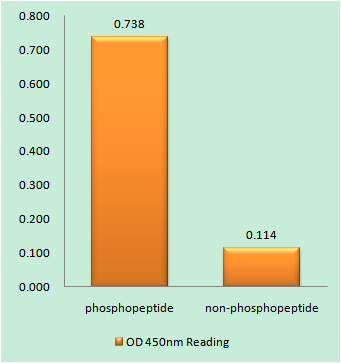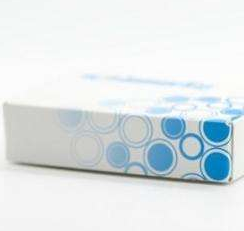Phospho BCAR1 (Y410) Cell-Based Colorimetric ELISA Kit
- Catalog No.:KA1211C
- Applications:ELISA
- Reactivity:Human;Mouse;Rat
- Gene Name:
- BCAR1
- Human Gene Id:
- 9564
- Human Swiss Prot No:
- P56945
- Mouse Swiss Prot No:
- Q61140
- Rat Swiss Prot No:
- Q63767
- Storage Stability:
- 2-8°C/6 months
- Other Name:
- Breast cancer anti-estrogen resistance protein 1 (CRK-associated substrate) (Cas scaffolding protein family member 1) (p130cas)
- Detection Method:
- Colorimetric
- Background:
- domain:A serine-rich region promotes activation of the serum response element (SRE).,domain:Contains a central domain (substrate domain) containing multiple potential SH2-binding sites and a C-terminal domain containing a divergent helix-loop-helix (HLH) motif. The SH2-binding sites putatively bind CRK, NCK and ABL SH2 domains. The HLH motif is absolutely required for the induction of pseudohyphal growth in yeast and mediates heterodimerization with CASL.,domain:The SH3 domain is necessary for the localization of the protein to focal adhesions and interacts with one proline-rich region of focal adhesion kinase 1.,function:Docking protein which plays a central coordinating role for tyrosine-kinase-based signaling related to cell adhesion. Implicated in induction of cell migration. Overexpression confers antiestrogen resistance on breast cancer cells.,PTM:Focal adhesion kinase 1 phosphorylates the protein at the YDYVHL motif. SRC-family kinases are recruited to the phosphorylated sites and can phosphorylate other tyrosine residues. Tyrosine phosphorylation is triggered by integrin mediated adhesion of cells to the extracellular matrix.,similarity:Belongs to the CAS family.,similarity:Contains 1 SH3 domain.,subcellular location:Unphosphorylated form localizes in the cytoplasm and can move to the membrane upon tyrosine phosphorylation.,subunit:Forms complexes in vivo with focal adhesion kinase 1, adapter protein CRKL and LYN kinase. Can heterodimerize with CASL. Interacts with BCAR3, NPHP1, PTK2B and SH2D3C (By similarity). Interacts with activated CSPG4. Interacts with INPPL1/SHIP2.,tissue specificity:Widely expressed with an abundant expression in the testis. Low level of expression seen in the liver, thymus, and peripheral blood leukocytes. The protein has been detected in a B-cell line.,
- Function:
- regulation of cell growth, activation of immune response, immune response-activating cell surface receptor signaling pathway, positive regulation of immune system process, immune response-activating signal transduction, immune response-regulating signal transduction, immune response-regulating cell surface receptor signaling pathway, cell motion, cytoskeleton organization, actin filament organization, cell adhesion, cell surface receptor linked signal transduction, enzyme linked receptor protein signaling pathway, transmembrane receptor protein tyrosine kinase signaling pathway, epidermal growth factor receptor signaling pathway, G-protein coupled receptor protein signaling pathway, integrin-mediated signaling pathway, cell proliferation, insulin receptor signaling pathway, response to endogenous stimulus, response to hormone stimulus, response to organic substance, regulation of cell de
- Subcellular Location:
- Cell junction, focal adhesion . Cytoplasm . Cell projection, axon . Unphosphorylated form localizes in the cytoplasm (By similarity). Localizes to focal adhesion sites following integrin engagement (By similarity). .
- Expression:
- Widely expressed with an abundant expression in the testis. Low level of expression seen in the liver, thymus, and peripheral blood leukocytes. The protein has been detected in a B-cell line.
- June 19-2018
- WESTERN IMMUNOBLOTTING PROTOCOL
- June 19-2018
- IMMUNOHISTOCHEMISTRY-PARAFFIN PROTOCOL
- June 19-2018
- IMMUNOFLUORESCENCE PROTOCOL
- September 08-2020
- FLOW-CYTOMEYRT-PROTOCOL
- May 20-2022
- Cell-Based ELISA│解您多样本WB检测之困扰
- July 13-2018
- CELL-BASED-ELISA-PROTOCOL-FOR-ACETYL-PROTEIN
- July 13-2018
- CELL-BASED-ELISA-PROTOCOL-FOR-PHOSPHO-PROTEIN
- July 13-2018
- Antibody-FAQs


